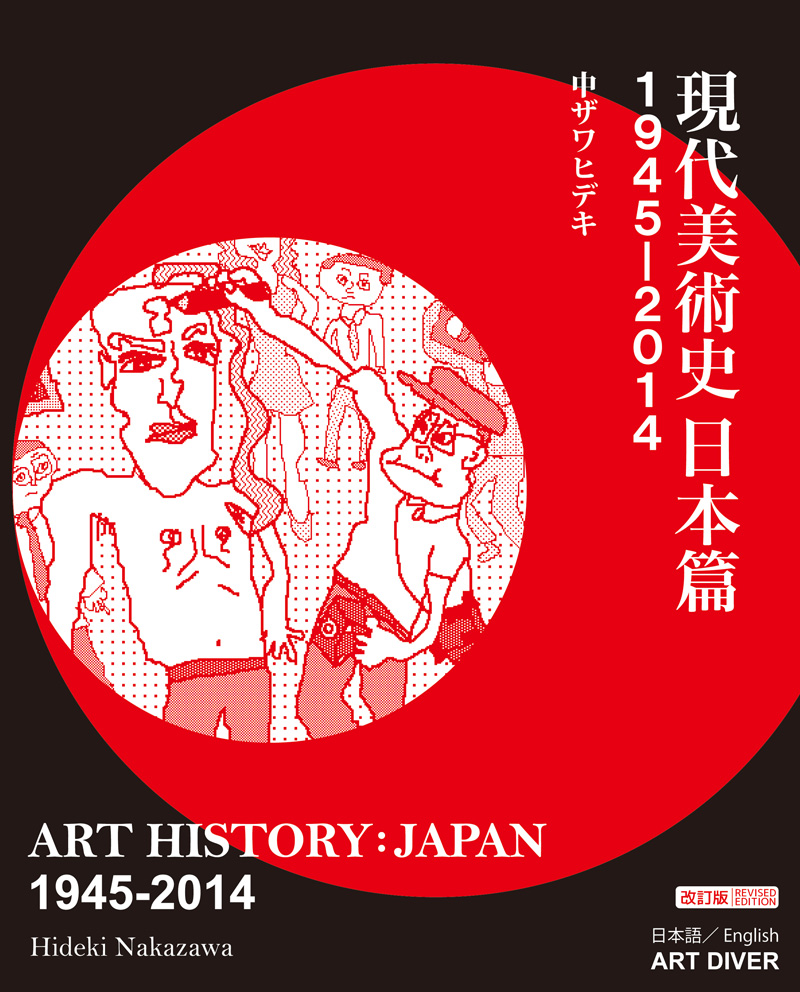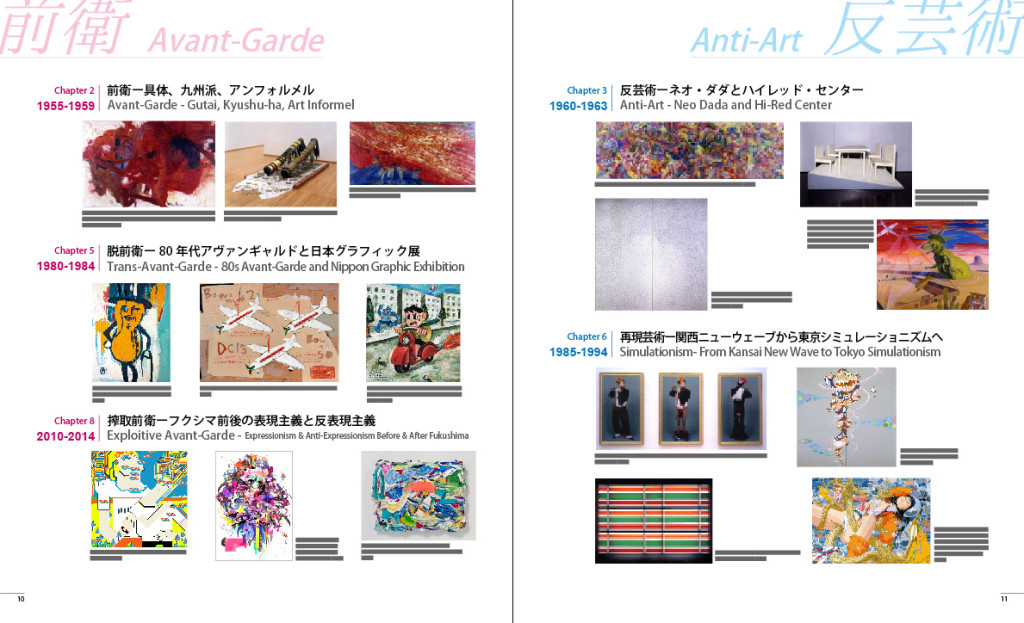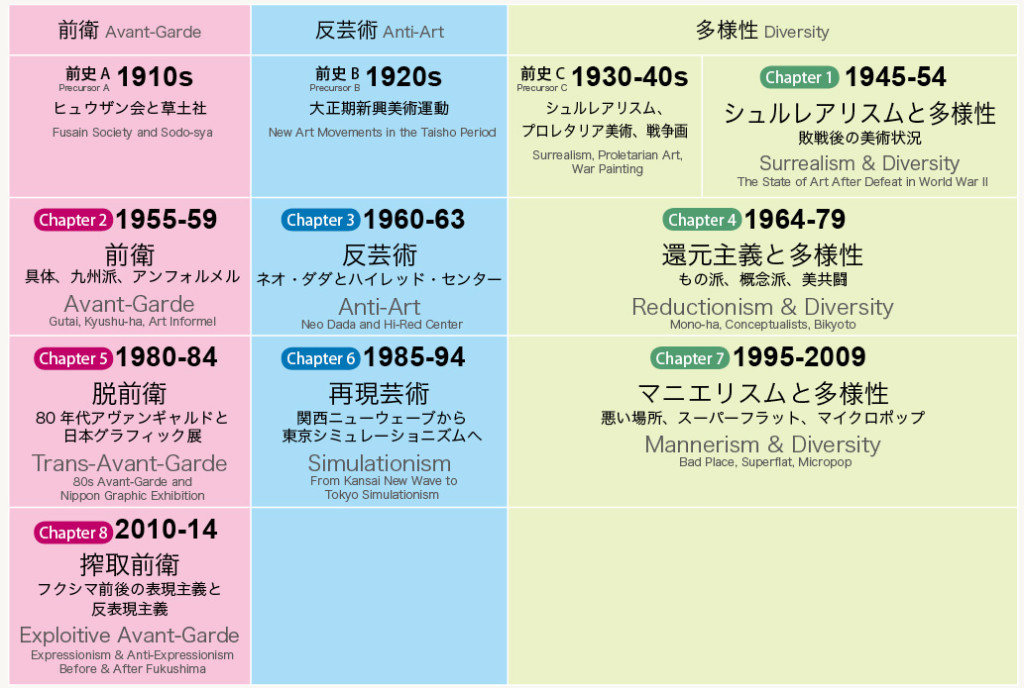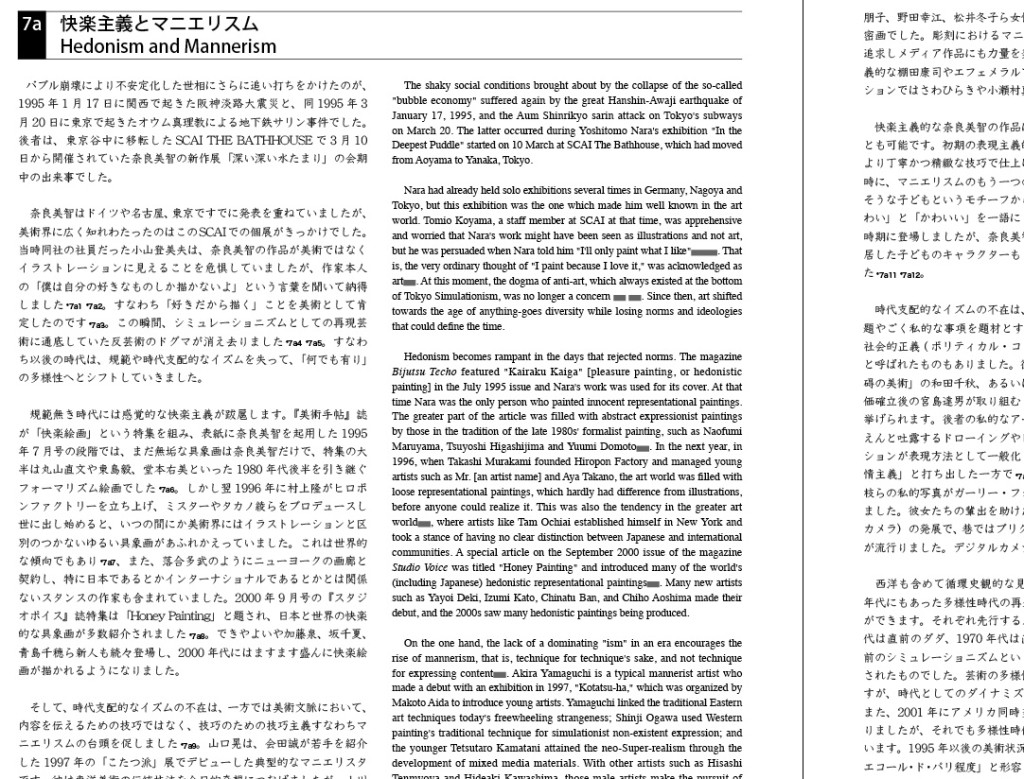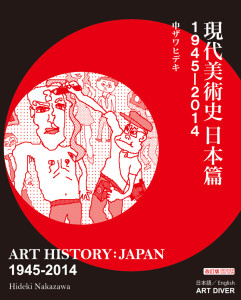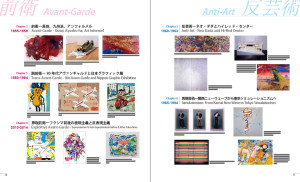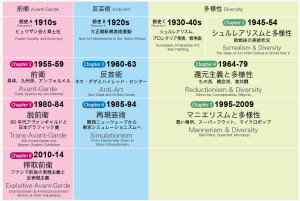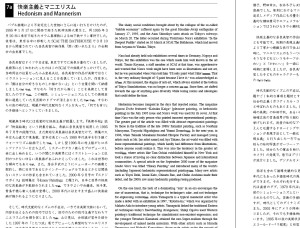"ART HISTORY JAPAN: 1945-2014" by Hideki Nakazawa
The 5th Printing is now on sale !
– 1st Printing Published: November 21, 2014
– 2nd Printing Published: March 5, 2015
– 3rd Printing Published: September 18, 2015
– 4th Printing Published: September 3, 2016
– 5th Printing Published: April 15, 2018
Author: Hideki Nakazawa
Title: “ART HISTORY: JAPAN 1945-2014″
Language: in English and Japanese (bilingual)
black-and-white/color, 136P
ISBN: 978-4-908122-00-2
size: 210×257mm
Translation Supervisors: Emily Wakeling (proofreading), Manabu Matsushita (translation)
Published: November 21, 2014
“ART HISTORY JAPAN: 1945-2014″ offers a historical perspective to comprehend dynamisms of Japanese art since 1945, exploring the nearly 70 year postwar art history with both established and more up-to-date examples such as Taro Okamoto, Tadanori Yokoo, Yayoi Kusama, Takashi Murakami, Yoshitomo Nara, Chim↑Pom, Chaos*Lounge and so on.
The book covers an unprecedentedly long period of postwar Japanese art from 1945 to this day in the author’s ambition to write “the only authentic history of Japanese contemporary art.” Chronologically chasing developments of various artistic styles and movements in details, the author demonstrates certain patterns recurring over the course of time and integrates those otherwise dispersed practices into a coherent cyclic history model.
The first edition in 2008 attained much attention in art communities, domestic and oversea alike, but the limited publication was shortly sold out while leaving enthusiastic anticipation for the second edition. This second edition is published not only to answer the immediate need but also to enhance the contents by extensively revising the book and newly adding Chapter 8 devoted to up-and-coming movements in contemporary art in Japan since 2008.
The depth and wide spectrum of arguments in “ART HISTORY JAPAN: 1945-2014″ will serve both serious art watchers and those who want to know more about contemporary art in Japan. As a growing number of global audience has discovered Japanese contemporary art, it is fairly fruitful to look through and reflect on its postwar art history now for better understanding and more informed discussion.
【Table of Contents】
Chapter 1 1945-1954
Surrealism & Diversity – The State of Art After Defeat in World War II
1a The Question of Artists’ War Responsibility
1b Participating in the Venice Biennale
1c “Heavy Hand,” Realism Controversy, Taro Okamoto
1d Reportage, Closed-Door, Shuzo Takiguchi and the Experimental Workshop
Chapter 2 1955-1959
Avant-Garde – Gutai, Kyushu-ha, Art Informel
2a Gutai
2b Kyushu-ha
2c Avant-Garde and Locality
2d Art Informel Sensation
2e Art Informel and the East
Chapter 3 1960-1963
Anti-Art – Neo Dada and Hi-Red Center
3a Neo Dadaism Organizers
3b The Discontinuation of the Yomiuri Independent Exhibition
3c Hi-Red Center
3d Pop Art in Japan
3e Zero Jigen
Chapter 4 1964-1979
Reductionism & Diversity- Mono-ha, Conceptualists, Bikyoto
4a Japanese Conceptualists (1) Get Rid of Objects
4b Japanese Conceptualists (2) Tricks and Vision
4c Mono-ha
4d Bikyoto, Post Conceptualists, Post Mono-ha
4e Return to Painting
Chapter 5 1980-1984
Trans-Avant-Garde – 80s Avant-Garde and Nippon Graphic Exhibition
5a Postmodernism in Japan: Inside and Outside
5b Inside: 80s Avant-Garde and Neo-Expressionism
5c Outside: Heta-Uma and Nippon Graphic Exhibition
5d Postmodernism and Historical Cycles
Chapter 6 1985-1994
Simulationism- From Kansai New Wave to Tokyo Simulationism
6a Yasumasa Morimura and Kansai New Wave
6b The Eve of Tokyo Simulationism
6c Tokyo Simulationism (1) Takashi Murakami and Masato Nakamura
6d TokyoSimulationism (2) Tsuyoshi Ozawa and Makoto Aida
Chapter 7 1995-2009
Mannerism & Diversity – Bad Place, Superflat, Micropop
7a Hedonism and Mannerism
7b Modest-type, Studio Shokudo, The Group 1965
7c Bad Place, Superflat, Method
7d Beauty, Value and the Infrastructure
7e Micropop, Insider Art, Chim↑Pom
Chapter 8 2010-2014
Exploitive Avant-Garde – Expressionism & Anti-Expressionism Before & After Fukushima
8a Hiroyuki Nisougi and the Eve of the Fourth Expressionism
8b Chaos*Lounge and the 2010 Landscape
8c Expressionist Movement After Fukushima
8d Anti-Expressionist Movement After Fukushima
【Related Information】
Interview with Hideki Nakazawa “Contemporary art in Japan has entered a new phase”(go to the Japnese site)
